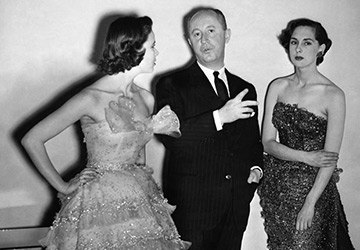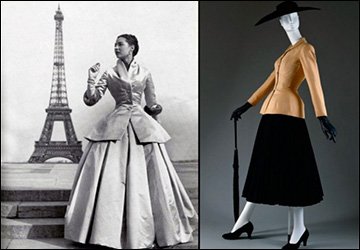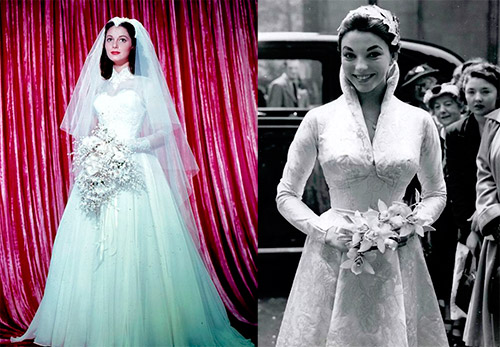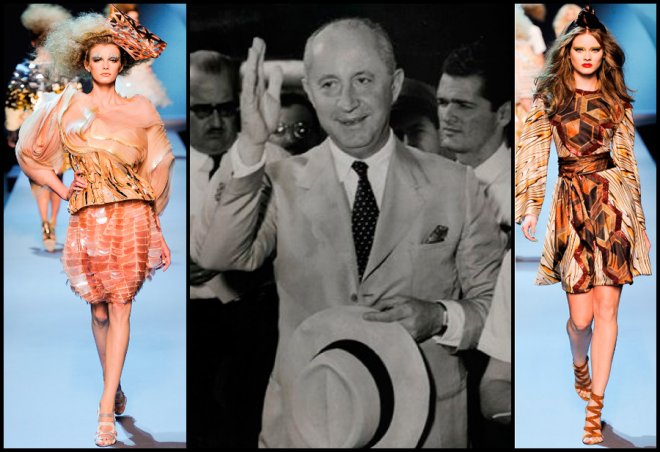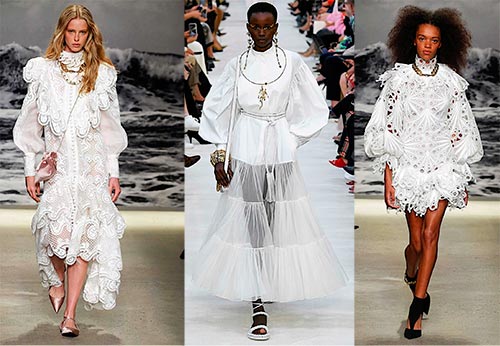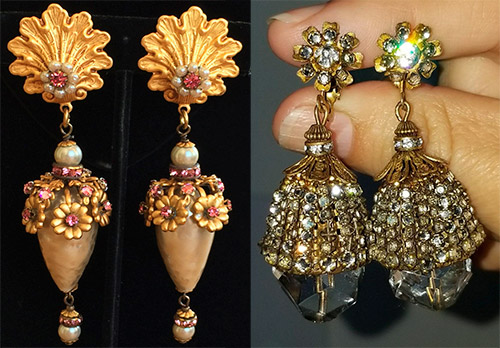Style
1950s fashion and style
The fashion of the 1950s became a decade in which neither before nor after there were so many designers whose ideas could so influence the fashion of the general public. First of all, Christian Dior should be named, who created in 1947 "New Direction", symbolizing the optimism and abundance that almost all women dreamed of after the horrors of the war.
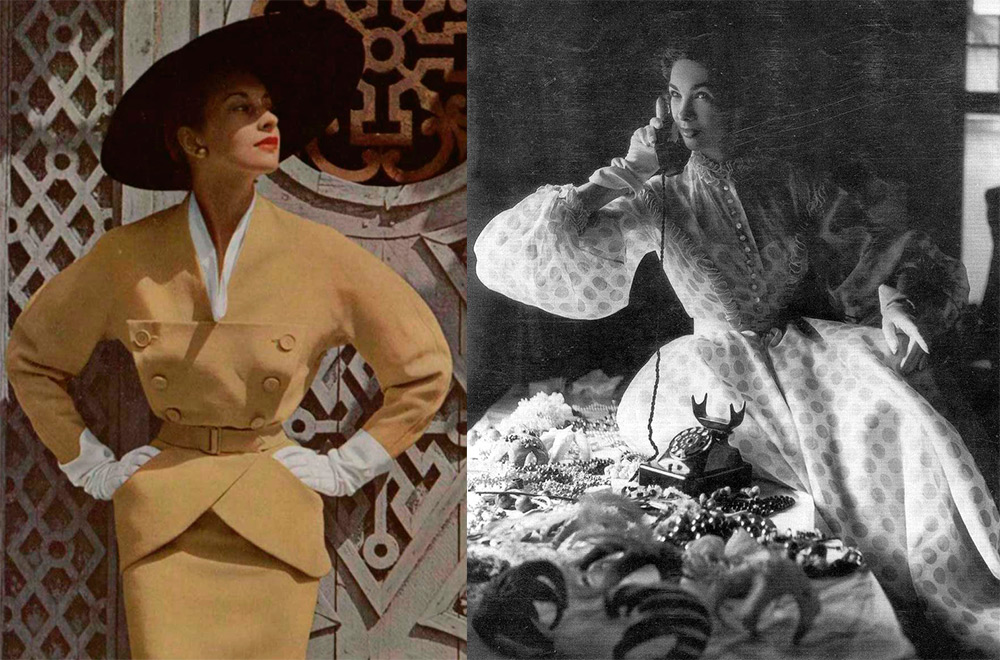
Therefore, despite the fact that not everyone could achieve such a position, not everyone could buy a dress worth 40 thousand francs, "New Direction" was a success all over the world. If enough people condemned it at the first performance, pointing out the miserable existence of the majority, then just a few years later, it was already taken for granted.
A woman richly dressed and groomed to the ends of her hair is the look of the 1950s. She was a testament to her husband's success. The "new direction" was not available to everyone, but it was an incentive for the development and emergence of a new middle stratum of society. And this was facilitated by new technologies that could give the average man cheap synthetic fabrics and many other items and entertainment, so that each of them could copy the style of the rich.
Wasn't that what a man needed? Feel happy, consuming more and more, and most importantly, like "them", that is, the rich and powerful of this world.
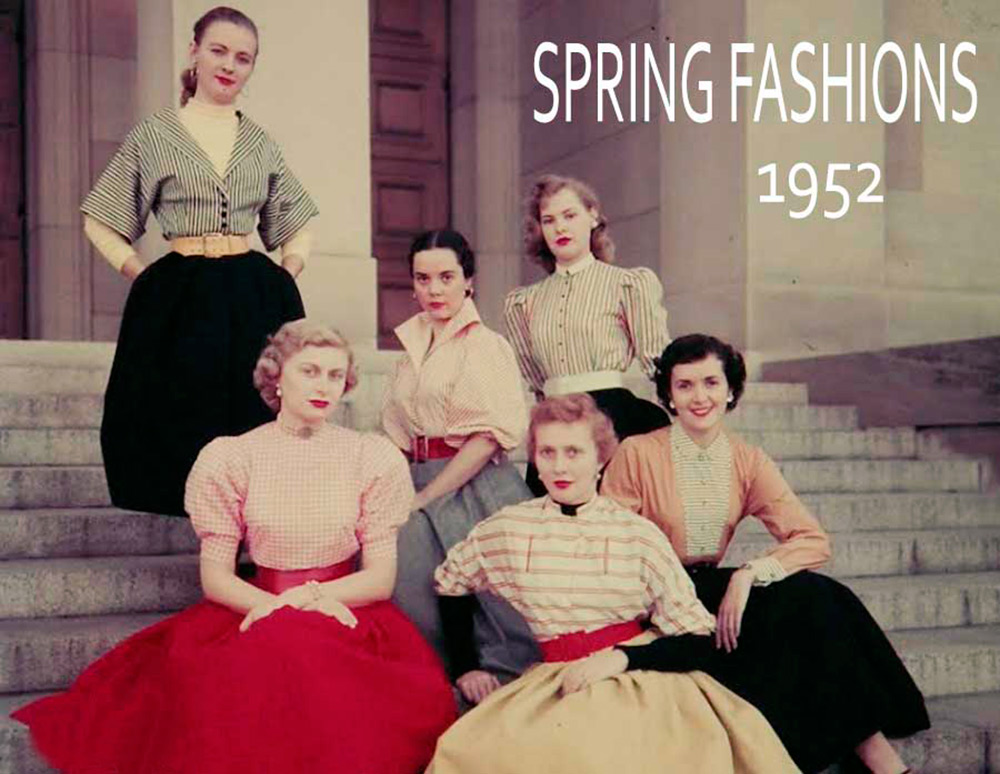
1950s fashion and style
In the 1950s, women never left the house without hats and gloves, they carefully selected all the accessories in accordance with the color and even the makeup was chosen in the same tone. They tried to wear high heels and nylon stockings, rarely changing this rule. The decollete was considered indecent during the day; they appeared in it only in the evening. The fabrics were chosen according to the time of day, for example, velvet - only in the evening.
Towards evening, the ladies dressed in more expensive clothes. Evening dresses made of silk or velvet, often with fur trim. Those who could afford, in the evening hours, dressed extremely luxuriously.
In the 1950s, it was believed that by a woman's appearance one could tell how her husband earned ...
If a woman was married, and the family belonged to the wealthier, then it was decent for her to change clothes up to six to seven times a day, while changing her makeup, hairstyle, and even more accessories. The lifestyle of a lady in the 1950s strictly followed certain rules of decency in front of society. The woman was supposed to be an exemplary housewife and a respectable wife and mother.
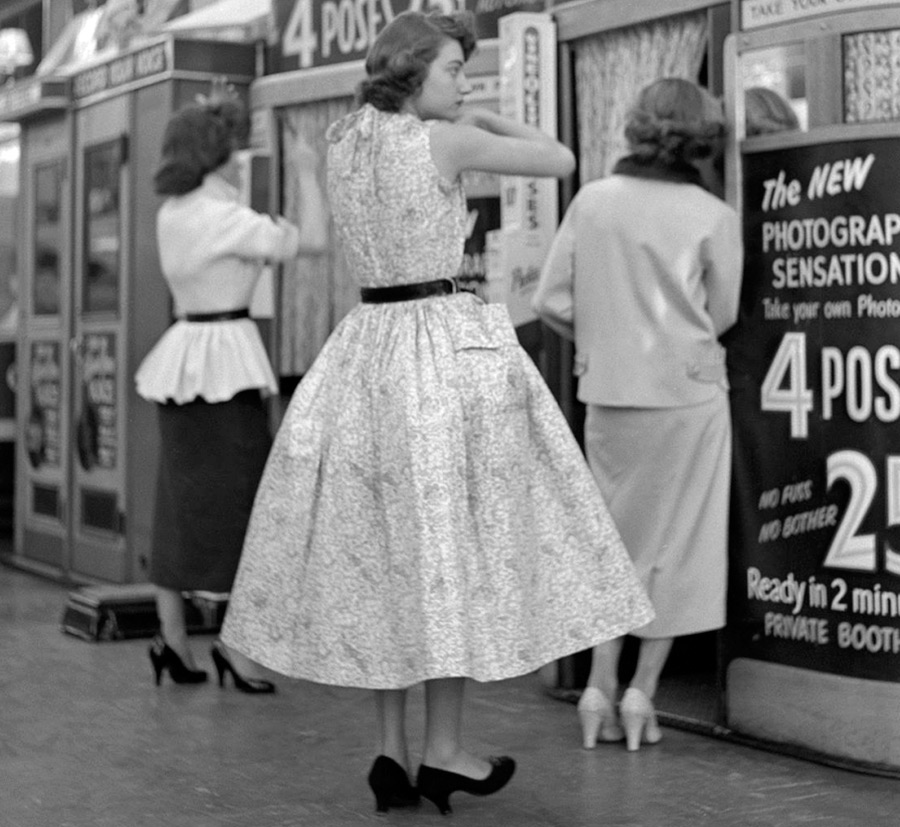
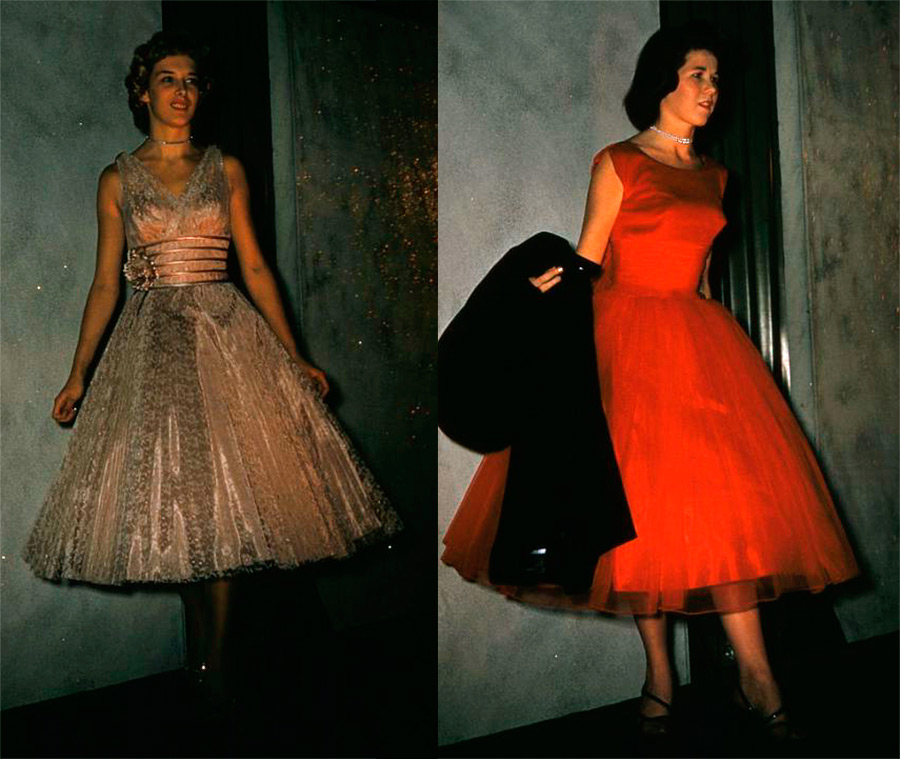
In European countries, most women, even the most modest condition, tried not to appear “in public” without makeup. The husband of such a lady rarely saw her without makeup, since she got up early, before he opened his eyes, and did everything necessary, decorating herself.
Of course, this was not the case for everyone. In Russia, ladies of high income, who were only in the party elite, could afford such care. In many families of a huge country called the Soviet Union, there was no need to put on makeup, getting up early in the morning, because there was no one to show themselves - in the early 1950s, those over thirty were left without any husbands who died during the war.
But a woman remains a woman, and despite the hardships of the country that has suffered losses, each tried to look her best at least at work.
But back to Europe, where at this time, ladies, well-groomed, chose smart and fashionable clothes even for home. Let's not deceive ourselves, such a life could only have flowed in Europe among the well-to-do. And yet, as time went on, the years of war went further and further into the past. Those who were in their twenties felt differently about their losses. And then, youth always looks into the distance, because the future seems distant and boundless.
It was among them - those in their twenties that those who tried to imitate the customs of the ruling class appeared. But as soon as the middle and lower strata of the people begin to imitate the upper ones, the old standards immediately begin to collapse, the established rules of good taste are loosened. For the upper strata of society, the former good taste was no longer good, because small people became involved in it, so the upper classes were amused by the destruction of style.

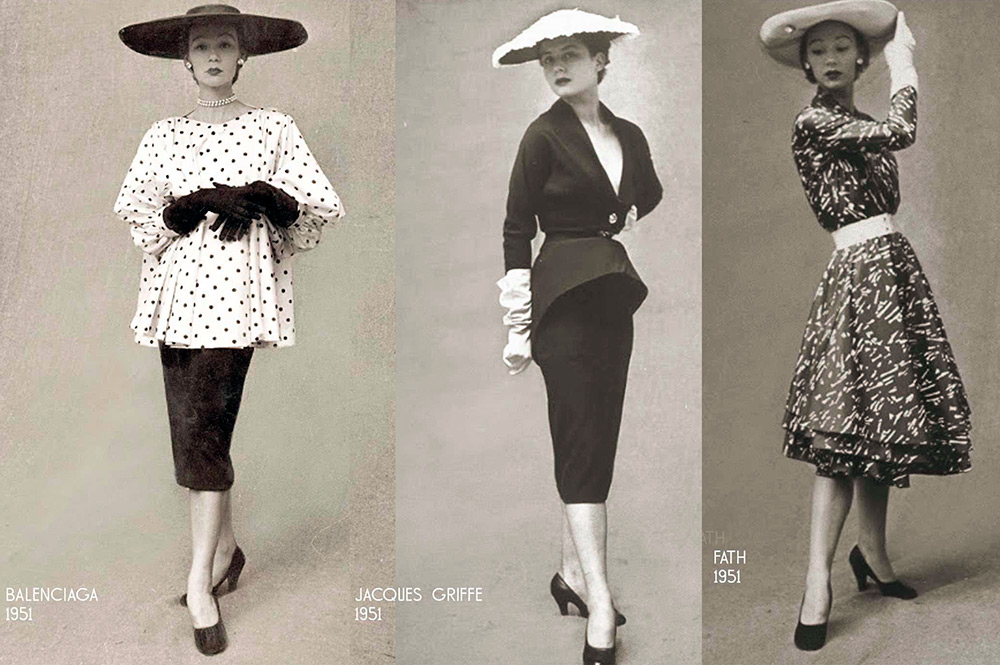
Remember "Breakfast at Tiffany's" - in the 1950s, noisy parties were held in Europe, at which well-dressed gentlemen began to destroy the old moral foundations. But there were also those who cherished these moral principles, even if only outwardly, but still. The neckline in the 50s was not so deep, and the skirts were too short, and the fabrics were too transparent.
Throughout history, fashion has always been in direct connection with changes in social, economic and cultural life. And then in the 1950s, in the post-war period, the doors of dance clubs opened, where you could meet your soul mate.
Dancing and movies were typical entertainment in those days. That is why girls and women tried to show themselves in the best possible way. Especially popular were fabrics in a cage, peas and, of course, in a flower. Buttons, bows, ribbons were often used as decoration. After all, it is these details that are easy to remove from the dress and the next evening to sew others on the same dress, and therefore look again in a new one.
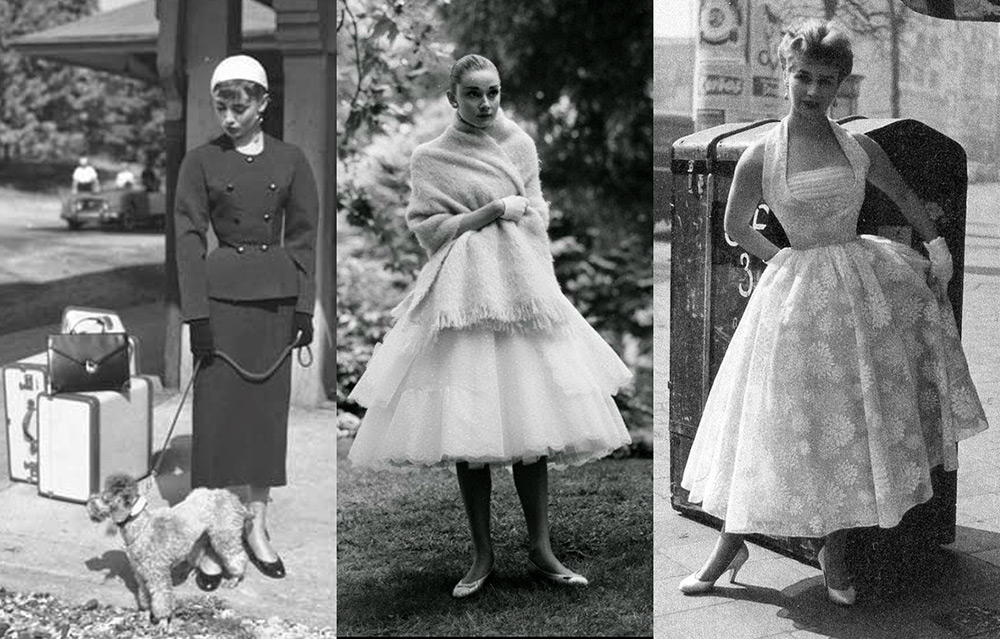
Scarves and kerchiefs were very fashionable as accessories; they could be draped in different ways and appeared every time with a new scarf on the shoulders. Several petticoats were worn under the dress so that the layering of frills was visible during the dance. V The Soviet Union this appeared much later.
The silhouette of a 1950s woman is soft, sloping shoulders, a slender, wasp waist, and round hips. In a business setting, they preferred a fitted suit, in which, paired with a jacket tightly fitting the waist, there was a narrow pencil skirt or a wide fluffy one. In everyday life, dress-shirts occupied an honorable place. In those years, pleated skirts were also loved. The length of all items, of course, was below the knee, almost to the middle of the lower leg.
To create a wasp waist, a wide belt became a frequent accessory, which emphasized the thin waist.
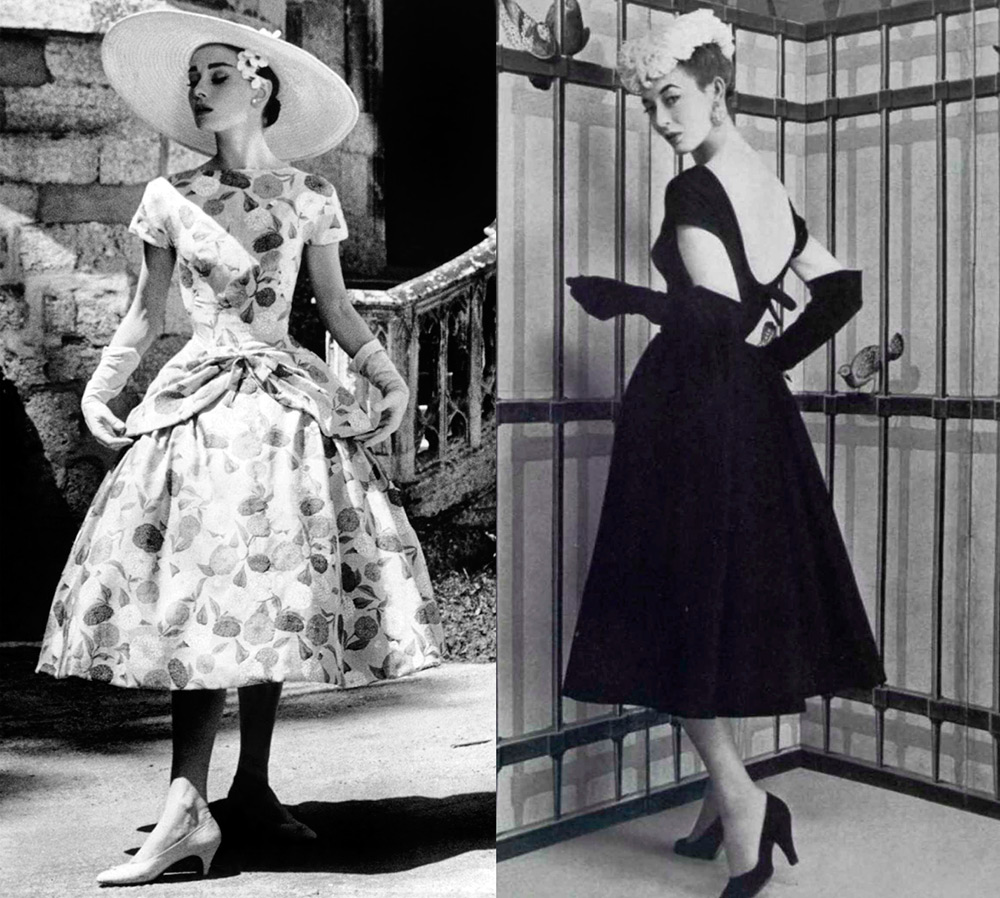
Shoes and fashion 1950
They wore narrow shoes with a pointed toe, the heel was either high or medium, and over the years it became thinner and thinner until it turned into a “stiletto heel”. At the same time, brocade or silk sandals appeared, which were decorated with buckles and rhinestones. Mules came into fashion - shoes without a backdrop, with a "glass" heel, the toe of which was decorated with down pom-poms.
It was in this decade that Roger Vivier's shoes enjoyed great success, because he was the main shoe designer for Dior. What can we say about the luxurious shoes that he created in 1953 for the coronation of Elizabeth. Made of golden leather, strewn with rubies, she was worthy of the leg of the future queen.
In 1955, Roger Vivière invented a new heel that was sloped so badly that the consequences could not only be speculated. The heel was called “shock”.
A string of pearls was most in demand as jewelry.
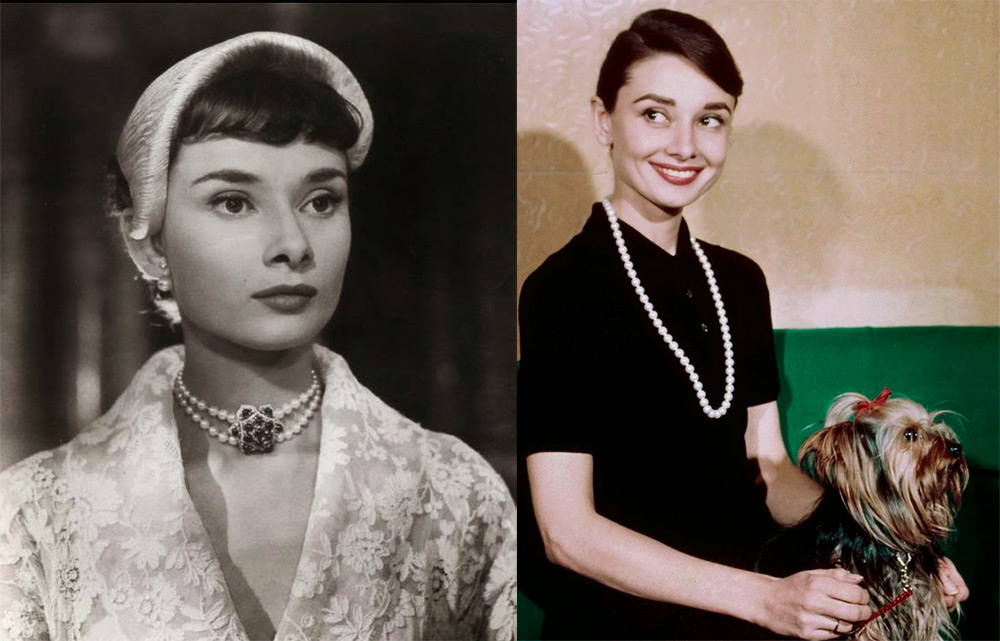
Christian Dior in each of his collections changed the length of the skirt or even the entire silhouette. It was said about him that Dior tried to make fashion go out of fashion as soon as possible. In the late 40s, Dior created a cocktail dress that was worn throughout the decade and even in the 60s. Today it is back in vogue.
Modest length of a fluffy skirt, neckline, sleeveless or very short sleeves. Sometimes the dress was with bare shoulders, as an addition, in this case, a bolero jacket was used, and the dress itself was used for any parties, it could be worn to the theater, to dances, or to visit. The dress can be truly called unique. The girls loved him because they were in it, like ladies, and the ladies - because they became ten years younger in it.
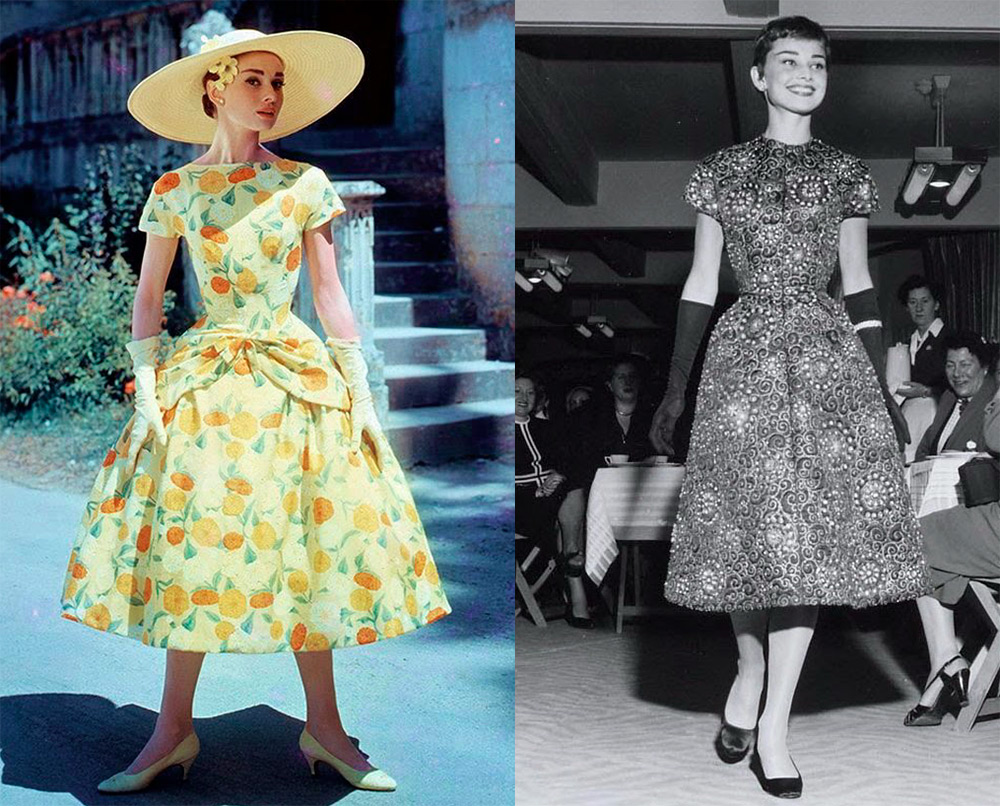
It was during these years that the famous Coco Chanel invented a suit that became eternal, it will always be worn, and it will bear her name.A tweed suit of the simplest cut, with a skirt slightly covering the knee, has become a symbol of elegance. “Dior? He does not dress women, he stuffs them, ”Mademoiselle said about Dior. “I could no longer see what Dior or Balmain did with the Parisian couture,” she told the press.
The Chanel suit has become a classic and the basis of office style. One could easily and gracefully get into a car in it, it did not require a corset, but at the same time it gave harmony to any figure. To the suit on the woman's legs, Chanel put on two-tone pumps, which visually reduced the foot, and handed them a handbag on a chain, hanging it on her shoulder and freeing their hands.
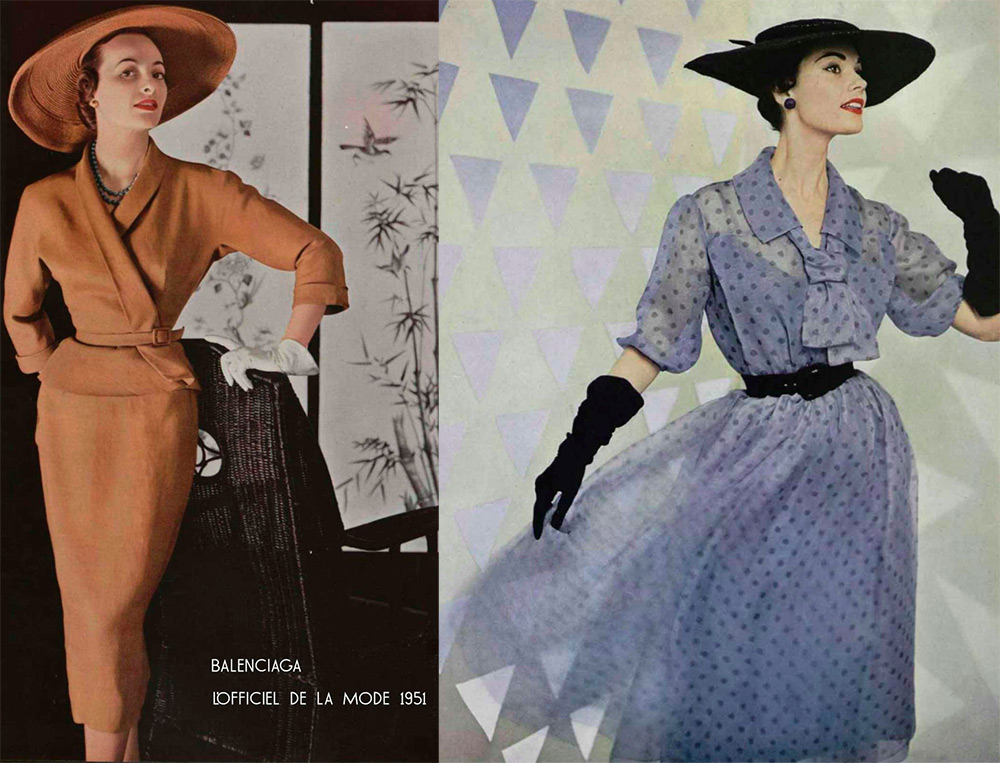
Cristobal Balenciaga... Spaniard by birth, he became a great designer of the time. Unlike Christian Dior, creating his dresses, he was sensitive to fabrics. He was and remains one of those couturiers who had practical experience in making clothes. Balenciaga Dresses resembled a work of art both in cut and in styles that did not require shapewear and multi-layered heavy petticoats. He strove to achieve perfection in everything, so his dresses were very comfortable.
Balenciaga dresses and 1950s style
1951 year - slightly tight and slightly loose with a jacket with a fitted bodice and a flying back.
1957 year - straight and loose bag dresses that crossed the decade of the 50s and went to the 60s.
1958 year - high-waisted a-line dresses, balloon dresses, cocoon coats, empire style dresses.
In this decade, the coat was also magnificent. The volume in the hips was created by a cut or a belt at the waist. The dressing coat appeared again, otherwise it was called the dress-coat. One-piece with a flare, it was beautifully fitted and often had a double-breasted closure. The coats were cut and loose with a flare from the bodice. All cut options made it possible to wear a fluffy skirt under the coat. In the women's wardrobe, trench coats also remained fashionable.
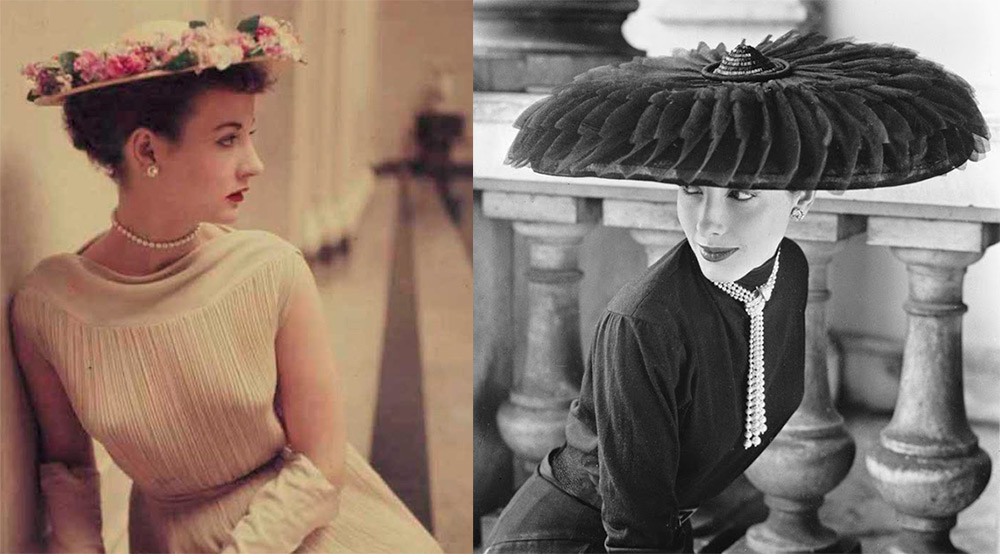
Fashionable hats and 1950s style
What kind of hats did you wear at that time? More often than not, the tops of cute hats remained small, even with wide brims. They were decorated with feathers, veils, ribbons and flowers. In the 50s, the hat was obligatory, it gave theatricality to the outfit.
A variety of hats: pill-caps, cloaches, boaters, berets, wide-brimmed hats were very popular. It is the various cocktail parties that have contributed to the emergence of so many hats. Often the hat was placed on the back of the head, so as not to interfere with the lush and carefully styled hairstyle.
The material for the luxurious styles of the hats was felt, taffeta, straws and other materials. In addition to hats, the ladies not only decorated their heads, but also protected their hairstyle with a silk scarf, which was folded diagonally, crossed under the chin and tied at the back of the neck. With such a scarf, sunglasses were also relied on.
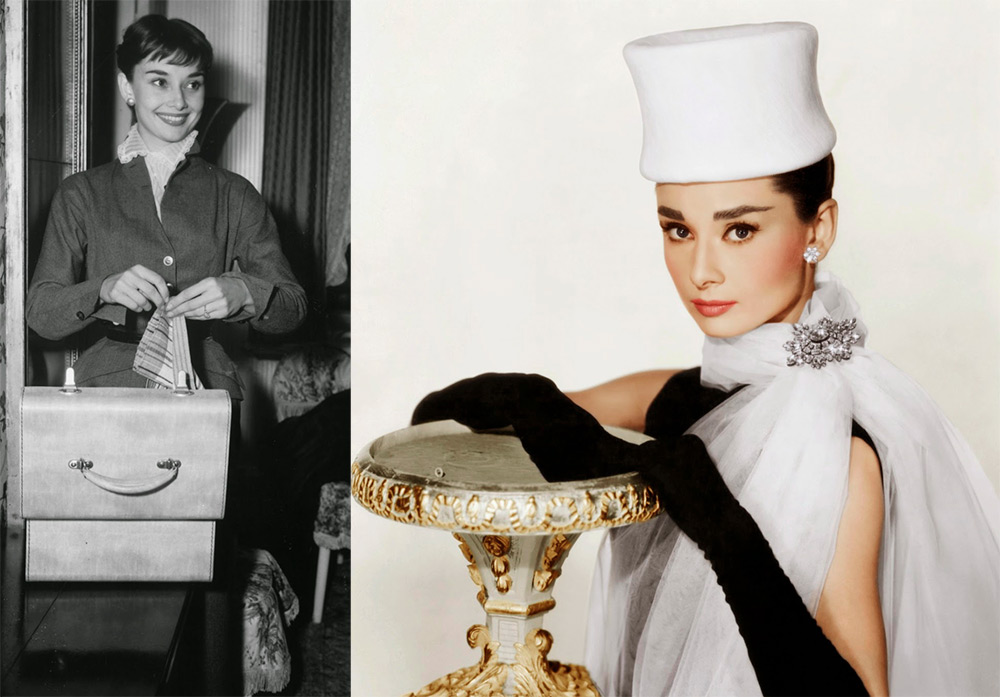
1950s bags and gloves
The ladies did not go outside without a pair of leather gloves. For a suit, short or semi-long leather gloves were relied, and for an evening dress - gloves above the elbow.
Handbags at this time were small and flat, more often they were of the same color or shade as the dress. There were also bags of a more voluminous version, with one or two short handles. It was in this decade that a bag on a long chain appeared - the Chanel bag. The shape of the bags was often preferred in the form of a rectangle or a trapezoid.
It has already been said that in these years, home clothes meant no less than clothes for publication. In Europe, women and houses looked elegant, which cannot be said about the Soviet Union. In the latter case, it was customary to take care of oneself only in the family of a party or trade worker, that is, it depended on the family budget and profits.
In the 1950s, haute couture evening gowns were a work of art. Natural expensive fabrics were used to create them.
Without adornments, as well as without hats and gloves, women did not leave the house at that time. In addition to true jewelry, round clips resembling buttons, rhinestone necklaces, and beads were fashionable. Sets were popular: a chain, earrings and a bracelet, and of course, a pearl necklace.
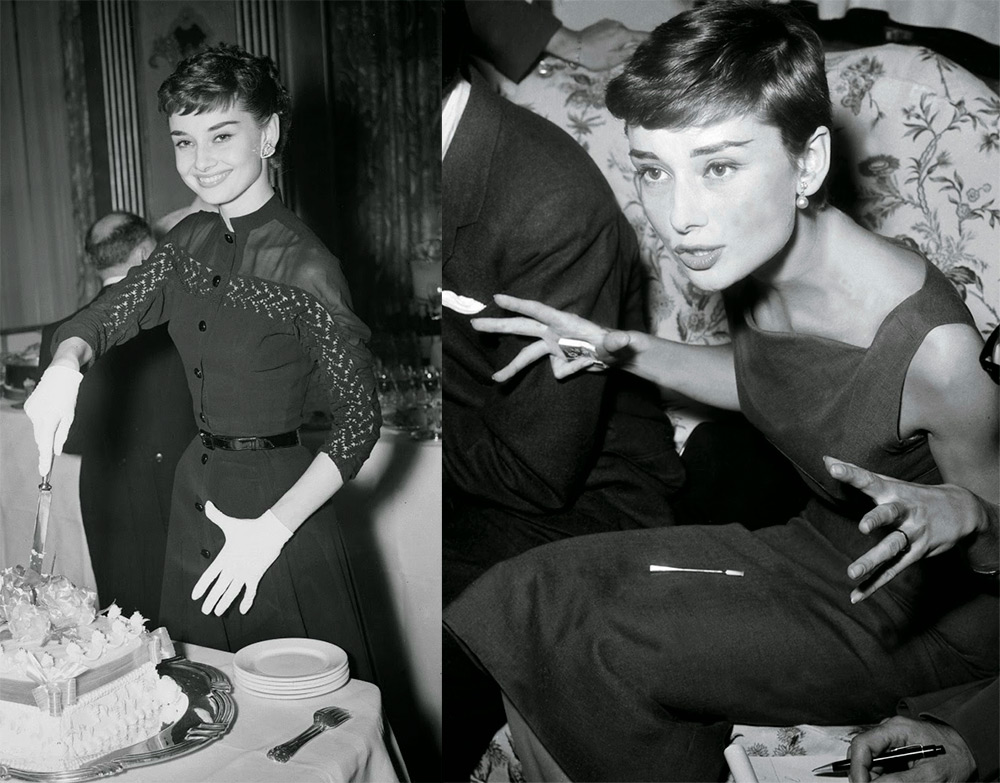
1950s hairstyles... They should be a completely separate conversation. We only note that at the peak of popularity there were large curls, lush styling, flowing waves of silk hair. Such hairstyles these days can only be worn at a gala event, like many other things created in clothes and accessories of the 50s.
Styles with bangs, like Audrey Hepburn's, were also fashionable. In the 50s, women changed their hair and even hair color as often as their clothes. Therefore, it was impossible to do without hairpieces and hairspray.
1950s fashion and style. The hourglass silhouette, like no other, emphasized the beauty of the female figure. Isn't that why there were so many incredibly beautiful women at that time? If only to list the beauties of Hollywood, and then, we will not list all of them. The standard of beauty was so different, but then the popular actresses of the 50s: Audrey Hepburn, Elizabeth Taylor, Marilyn Monroe, Sophia Loren, Grace Kelly, Diana Dors, Gina Lollobrigida, Ava Gardner and many others.
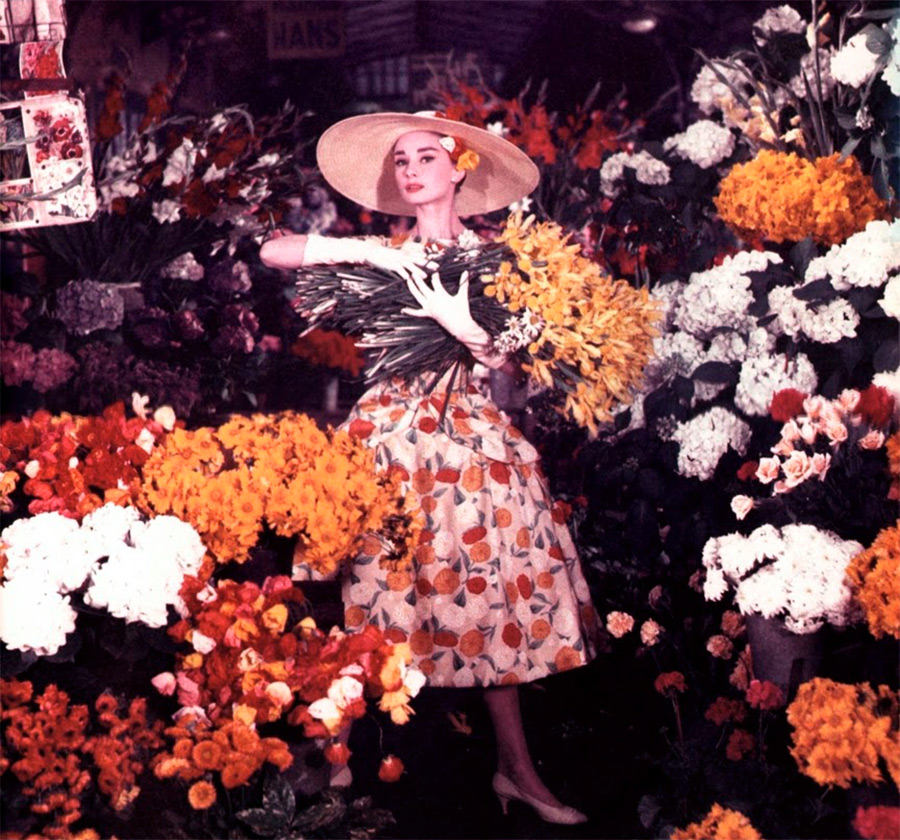
1950s fashion can be called truly feminine and elegant. It is called the most graceful and charming in the entire history of the twentieth century. How true when Christian Dior compared a woman to a flower. However, not only he ...
Many men repeated words similar to those that sounded in I. Kalman's operetta "Bayadera":
Oh bayadera, oh beautiful flower!
Seeing you, I could not forget ...
I'll be waiting for you,
I will call you
In a quivering hope, worrying and loving, ...
Seeing you, I could not forget ...
I'll be waiting for you,
I will call you
In a quivering hope, worrying and loving, ...
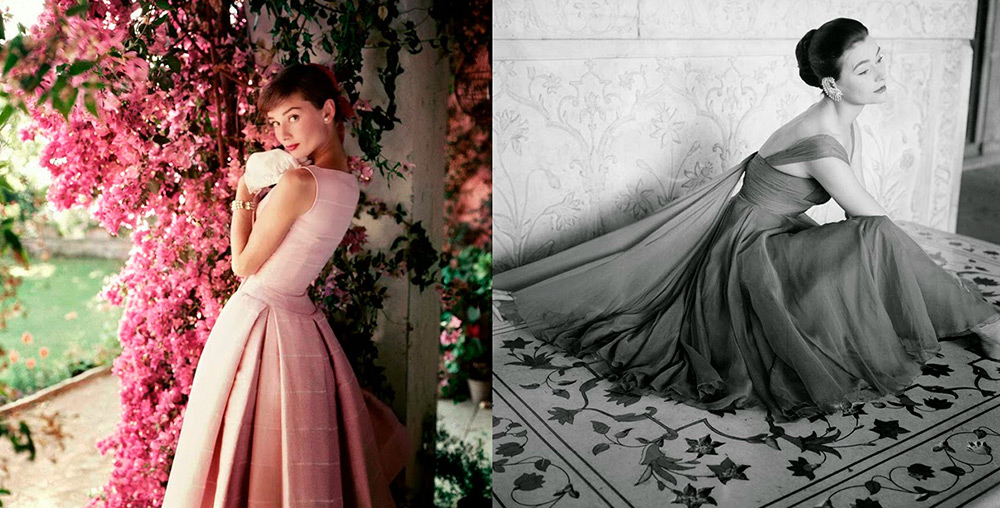
Comments and Reviews
Add a comment
Rating news
Shades of clothing that make women look younger
What shades of hair make women younger: rules and photos
Funny wedding dresses - photos and ideas
12 most expensive down jackets for the winter
How to look 25 at 40: tips from supermodels
Beautiful schoolgirls
Anti-aging haircuts and hairstyles for women
Fashionable skirts for autumn and winter
Fashionable women's trousers for the cold season
Fashionable and stylish sandals for summer 2024
Spring-summer 2024
 Fashionable dresses and tops with thin spaghetti straps
Fashionable dresses and tops with thin spaghetti straps
 Bandana tops: how to wear stylishly and beautifully
Bandana tops: how to wear stylishly and beautifully
 How to put together the perfect men's wardrobe for the summer
How to put together the perfect men's wardrobe for the summer
 Fashionable shorts for spring-summer 2024
Fashionable shorts for spring-summer 2024
 Fashionable skirts for spring-summer 2024: a guide to online shopping
Fashionable skirts for spring-summer 2024: a guide to online shopping
 The most fashionable dresses spring-summer 2024: styles and colors
The most fashionable dresses spring-summer 2024: styles and colors
 Fashionable total look 2024: ideas of images and trends
Fashionable total look 2024: ideas of images and trends
